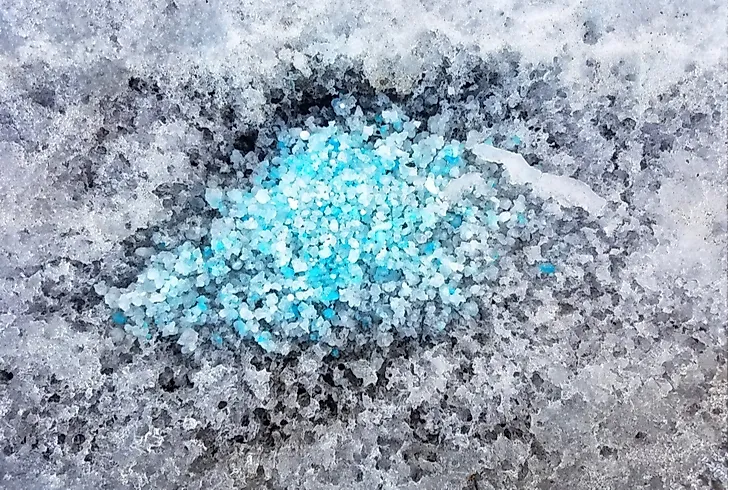Why Does Salt Melt Ice?

Why Does Salt Melt Ice?
Approximately twenty million tons of salt are used annually to melt ice and snow during winter in the northern regions. The science behind it is not rocket science, but not everyone can tell why salt melts ice. First, it's important to understand the freezing point of water. At 32 °F (0o C) water freezes and solidifies. At this temperature, the ice forms a thin layer on top of the road. The water on top of the ice melts it while the ice freezes the water below it. At 0o C the exchange rate between ice and water remains constant and the amount of ice and water remains the same. When the temperature rises above zero degrees, more ice melts to liquid but if the temperature drops, then more water become ice. Impurities lower the freezing point of water. If an ionic compound such as salt is added to water, the water would no longer freeze at 0oC but a lower temperature. However, the water can still melt ice at the temperature which means that there will be less ice and more water on the road.
How Salt Lowers the Freezing Point of Water
Salt lowers the freezing point of water through a concept known as "freezing point depression." The salt makes it difficult for the water molecules to bond together in their natural form. Salt is soluble in water and breaks into its consistent elements as it dissolves. The normal table salt (sodium chloride (NaCl)) breaks into sodium ions and chloride ions. NACL is used to melt ice at a lower scale because of the compound break into one ion of sodium and one chloride. When melting ice on a large scale, calcium chloride (CaCl2) is used because it breaks into three ions, one calcium, and two chlorides. When more ions are released there is a greater barrier to molecules attaching together.
Effects of Chlorides on the Environment
Although chlorides are some of the most effective compounds used to melt ice and snow, they have adverse effects on the environments. Chlorine is used to kill pathogens in water which causes harm to aquatic animals. It dehydrates plants and insects and thus alters the food web. Chloride is known to inhibit the growth of plants when used to kill pathogens in the soil. Other compounds including Ammonium sulfate (NH4)2SO4, Ammonium nitrate (NH4NO3), and Potassium acetate (CH3COOK) are less adverse to the environment but too costly to be used in a large scale operation. Airports are known to use urea, alcohols, and glycols to clear snow from the runways.











